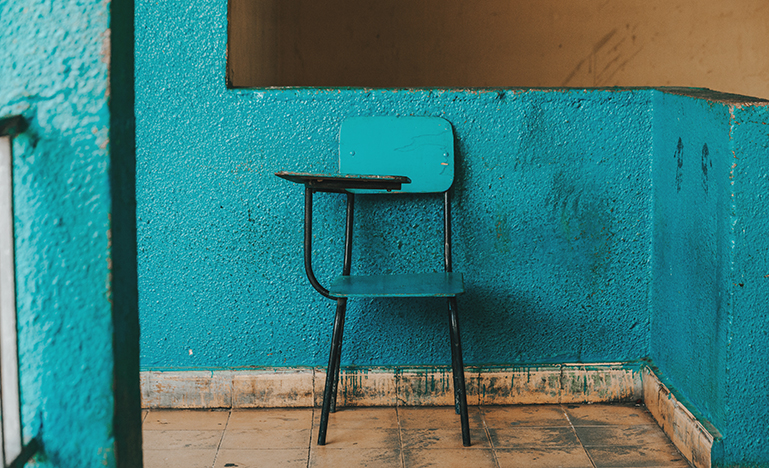Separate schooling and making sense of Canada’s identities
The case for separate schooling is increasingly being challenged as both secular groups and religious minorities gain influence across Canada.

Canada had at its outset two founding peoples, legally and constitutionally speaking, which makes it unique among the world’s nation-states. It’s a narrative, of course, that discounts the foundational role played by this country’s Indigenous Peoples. More on that later.
To ensure British and French identities would both continue as part of the Canadian Compact, section 93 of the Constitution Act enshrined public funding for separate schools for Protestants and Catholics – though only where such schools existed before a province entered into Confederation.
Much has changed since 1867. The case for separate schooling is increasingly being challenged as both secular groups and religious minorities gain influence across Canada. Many provinces have renegotiated their relationships with separate schools.
Manitoba was the first to embrace change, and began withdrawing full public support for separate schools beginning in the 1890s amid the political crisis surrounding the Manitoba Schools Question. Quebec had separate Protestant and Catholic school boards until 1997, when it replaced them with a secular, linguistically based school system – a delayed outcome of the province’s Quiet Revolution against the Catholic state.
In Newfoundland and Labrador, plummeting enrolment in denominational schools during the 1980s and 1990s began to make these schools unsustainable. In 1997, Term 17 was amended to create a uniform, publicly funded, non-denominational school system.
Alberta, Saskatchewan and Ontario still provide public funding for Catholic schools.
Last year, the Saskatchewan Queen’s Bench scrutinized section 93 and found that changes in social norms since the Victorian era should inform our understanding of religious rights. Justice Donald Layh ruled that a constitutional guarantee for Catholic schools does not include public funding for non-Catholic students in Theodore, Saskatchewan. In re-examining section 93 and finding the practice to be discriminatory, Justice Layh noted that the “‘solemn pact’ between Ontario and Quebec has effectively become a partner-less pact since 1997.”
In response, the Saskatchewan government invoked the notwithstanding clause and is appealing that decision.
Now the spotlight is on Canada’s largest and most diverse province, where the specialized treatment afforded to Catholic schools still poses a quandary. Ontario’s publicly funded schools were initially divided into Catholic and non-denominational Protestant schools. The latter were known as “public” schools, but were clearly Christian. This proved problematic to students of other faiths. Eventually, parents mounted a successful court challenge of the curriculum because of the predominantly Christian nature of the teachings. Christian values were replaced with Canadian values.
Today, Catholic schools in Ontario struggle with enrolment problems. Since funding is based on student population, they increasingly vie with public schools to attract students. Non-Catholic students in Ontario Catholic schools now exceed 8 per cent of students, with some schools busing students in to bolster their ranks.
As in Saskatchewan’s case, it seems likely that enrolling non-Catholics in publicly funded Catholic schools is contrary to the spirit of the Canadian Compact. And although the Supreme Court has repeatedly upheld a “special status to particular classes of people” that creates a “privileged status on those religious minorities,” using these funds to educate non-Catholics accentuates any discriminatory impacts on other Canadians.
Amid all of this, Ontario Catholic schools have attracted scrutiny for teaching creationism, opposing homosexuality, and banning any cooperation with groups that might support abortion. A 2014 Ontario Superior Court ruling put a stop to forced participation in religious programs, and a human rights complaint last year was only settled when the school agreed that students seeking religious exemptions should not be required to provide justifications.
Nobody is saying that Catholics – or anyone else – cannot hold their religious beliefs. But there are concerns about providing public funds to institutions that no longer share the same values as the broader public.
Finally, the role of the church and its schools in the cultural genocide of Indigenous peoples provides a compelling motivation to consider withdrawing funding for religious schools. Reconciliation can only truly occur alongside a complete decoupling of church and state, regardless of history.
The Truth and Reconciliation Commission report focused extensively on the role of the church and religious schooling as state instruments for cultural genocide. The two non-Indigenous founding peoples at Confederation entirely ignored and excluded Indigenous concerns and protection of their cultural and linguistic identities.
If public funds are to be used to help educate Canadians about ethnic heritages, it is the Indigenous contribution that should be prioritized above all else.


